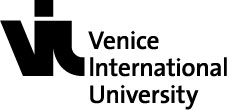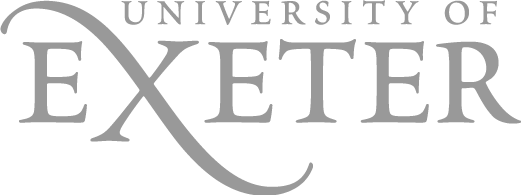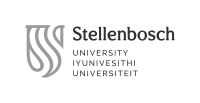F2411 Cities and Cultural Production
Professors
Schedule
Course description
According to many economists, sociologists and geographers, such as Allen J. Scott or Richard Florida or Peter Hall, major portions of the modern cultural economy are concentrated in global cities like Los Angeles, New York, London or Tokyo, where the peculiar geographic underpinnings are essential to understand processes of creativity and innovation in the cultural economy.
Nevertheless, second-tier cities with specific economic patterns like Milan or Berlin or with a unique heritage provision like Venice have also developed forms of creative and leisure economies. The module will address relevant questions in social science and urban studies: Why some cities growth and others decline? What are the effects of a cultural-driven model of growth on urban areas? How have digital transformation and Covid changed the cultural economy of cities?
Starting from that, the course aims at:
• Investigating how creative industries affect the processes of urban growth by focusing on the relationships between urban landscapes/geographies and creative innovation and production systems.
• Integrating economic, managerial, urban and cultural studies dealing with the theme of creative professionals and creativity skills.
• Developing competencies to carry on field research within the urban setting; as well as to understand job responsibilities as urban marketing experts within territorial agencies; urban events’ organizers; researchers in private/public research centers working on creative industries and urban settings; consultants for developers and municipalities. Links with already established professionals in the field will be created through urban exploration, institutional visits, and project works.
The module is built around three major blocks of content. In the first part we will analyse the notion of city, the drivers of growth and the pattern of urban development by comparing theories in different social sciences. In the second part we will focus on the characteristics of cultural production in urban areas using case studies to understand the impact of cultural production on creative cities and digital innovation on smart cities. The third part of the module is a critical review of the former theories and the evaluation of the effect of cultural industries on public space, preservation of cultural heritage, overtourism, gentrification and social inequalities.
From the methodological perspective, the teaching approach will include:
- Frontal lessons on the fundamental notions of urban and cultural theories;
- Presentation of case studies on specific projects in cities around the world;
- Class discussion of specific topics based on academic papers;
- Field research with meetings with stakeholders and urban exploration in Venice.
About 25% of student time will be spent on field research in Venice. Students will work in groups to gather observations and data on the consequences of the intense use of built heritage and events as major tourist attractions. Also with the support of an international benchmark they will evaluate the feasibility of different policies aimed at controlling tourism flows, reducing crowding effects and de-population, fostering re-urbanization and economic diversification.
| !! The course will include an Intensive Research Fieldwork (IRF) at the Biennale. The fieldwork will take place on a weekend (November 8-9-10) and will engage the students from 10am to 5pm for three consecutive days. The activity is an integral part of the course and therefore attendance is compulsory. |
Learning outcomes of the course
- Understanding the most important theories that explain the existence and growth of urban agglomerations
- Comparing strategies and policies in cultural-driven urban development
- Evaluating positive and negative effects of cultural industries in large and small urban agglomerations, peripheries, south-word cities
- Assessing the feasibility of smart city projects
- Planning field research, building comparative case studies, gathering evidence to confirm or refute a thesis
Teaching and evaluation methods
Students will be evaluated on individual participation (20%), group project (50%) and individual exam (30%).
Group projects will be planned with the instructor and will focus on the relationship between cultural productions and some of three major problems of the city of Venice: Overturism and tourism mono-culture; environmental risk and sustainable growth, depopulation and cultural heritage preservation.
Syllabus
Week 1
_Introduction to the module
_Urban Studies I. What is a city? An inquiry around contemporary urbanization
Week 2
_Economics and city models
_Urban Studies II. City growth in Europe and US
Week 3
_The Creative City I. City growth and the creative economy
_The Creative City II. Cultural driven policies in urban settings
Week 4
_"Re-urbanization I. Gentrification (and its discontents)"
_"Re-Urbanization II. Art and public space"
Week 5
_Field research Biennale - Preparation
Week 6
_Venice I. The city of the Others
_Venice II. Mapping Venice Geographies of tourism
Week 7
(November 8-9-10 - Friday-Sunday, 10 am - 5 pm) Intensive Research Fieldwork (IRF) at the Biennale. Compulsory attendance.
Week 8
_Group Work - Revision
Week 9
_Venice III. Heritage cities and events
Week 10
_New urban geographies I. Centers and peripheries
_The digital city. An inquiry around smart cities
Week 11
_New urban geographies II. Art and Culture in South World Cities: Case Studies
Week 12
_Group Work - Presentations and discussion
_Group Work - Presentations and discussion
Bibliography
Barca, F., McCann, P. and Rodríguez‐Pose, A., 2012. The case for regional development intervention: place‐based versus place‐neutral approaches. Journal of regional science, 52(1), pp.134-152.
Gutierrez-Posada, D., Kitsos, T., Nathan, M. and Nuccio, M., 2023. Creative clusters and creative multipliers: Evidence from UK cities. Economic Geography, 99(1), pp.1-24.
Harvey, D., 2017. The right to the city. In Citizenship Rights (pp. 465-482). Routledge.
Kitchin, R., 2014. The real-time city? Big data and smart urbanism. GeoJournal, 79(1), pp.1-14.
Molotch H. (1976) The City as a Growth Machine: Toward a Political Economy of Place, The American Journal of Sociology, 82, 2, 309-332.
O’Connor, J. and Shaw, K., 2014. What next for the creative city?. City, culture and society, 5(3), pp.165-170. Scott A.J., Storper M., 2009 Rethinking human capital, creativity and urban growth, Journal of Economic Geography, 9, 147–167
Pedrosa, A. , Estudio Campo Foreigns 2024 Everywhere – Biennale Arte 2024 Silvana Editoriale(selected readings from the catalogue)
Petkov, K., 2020. Integrating the foreigner: the strategy of inclusion in Renaissance Venice. In Cultures and Practices of Coexistence from the Thirteenth Through the Seventeenth Centuries (pp. 101-116). Routledge.
Rabari, C. and Storper, M., 2015. The digital skin of cities: urban theory and research in the age of the sensored and metered city, ubiquitous computing and big data. Cambridge journal of regions, economy and society, 8(1), pp.27-42.
Richards, G. and Wilson, J. (2006) Developing Creativity in Tourist Experiences: A Solution to the Serial Reproduction of Culture? Tourism Management 27, 1209-1223.
Rodríguez-Pose, A., 2018. The revenge of the places that don’t matter (and what to do about it). Cambridge journal of regions, economy and society, 11(1), pp.189-209.
Roy, A., (2011). Slumdog Cities: Rethinking Subaltern Urbanism. International Journal of Urban and Regional Research, 35.2, pp. 223-238. Sennett, R., 2020. The public realm. In Being urban (pp. 35-58). Routledge.
Salerno, G.M. and Russo, A.P., 2022. Venice as a short-term city. Between global trends and local lock-ins. In Platform-Mediated Tourism (pp. 90-109). Routledge.
Salerno, G.M., 2022. Touristification and displacement. The long-standing production of Venice as a tourist attraction. City, 26(2-3), pp.519-541.
Scott, A.J. and Storper, M., 2015. The nature of cities: The scope and limits of urban theory. International journal of urban and regional research, 39(1), pp.1-15.
Sharp, J., Pollock, V. and Paddison, R., 2020. Just art for a just city: Public art and social inclusion in urban regeneration. In Culture-Led Urban Regeneration (pp. 156-178). Routledge.
Sheppe W. (ed.) 2016 Migropolis: Venice: Atlas of a Global Situation Hatje Cantz Verlag (selected readings)
Storper M. (2010) Why Does a City Grow? Specialisation, Human Capital or Institutions?, Urban Studies, 47, 10, 2027–2050.
Zukin, S., 1987. Gentrification: culture and capital in the urban core. Annual review of sociology, 13(1), pp.129-147. Zukin, S., 1998. Urban lifestyles: Diversity and standardisation in spaces of consumption. Urban studies, 35(5-6), pp.825-839.
Slides and further materials will be provided by the instructor.
Last updated: July 8, 2024




















